Oceanian Food Dishes: Basic Overview
Common Ingredients
Common Cooking Methods
Courses
Meals
Key Taste
Eating Etiquette
Meal Presentation
Culinary Festivals
Influence and Fusion
Popular Types of Oceanian Dishes
-
Casseroles and bakes
In Oceanian cuisine, casseroles and bakes often feature a hearty combination of ingredients, such as meats, vegetables, and starches, layered or mixed together and then baked to perfection.
These dishes are known for their comfort food qualities, incorporating local ingredients like lamb, beef, and root vegetables.
-
Cakes and pastries
Cakes and pastries in the Oceania region range from simple, rustic breads like the Australian Damper to intricate desserts like the Pavlova, adorned with fresh fruits and cream.
These baked goods often incorporate local flavors such as coconut, banana, and various fruits.
-
Desserts
Desserts in Oceanian cuisine are as varied as the region itself, featuring everything from the light and airy pavlova, named after the Russian ballerina, to the rich and creamy Hokey Pokey ice cream of New Zealand.
Ingredients like fresh fruits, honey, and dairy are staples in these sweet treats, reflecting the natural bounty of the region.
-
Raw dishes
Raw dishes in Oceanian cuisine celebrate the freshness of the ingredients, particularly seafood, which is abundant in the region.
Dishes like kokoda, similar to ceviche, feature raw fish marinated in citrus juice and coconut milk, showcasing the fusion of local and external culinary influences.
-
Fried dishes
Fried dishes in Oceanian cuisine range from street food favorites like the Australian dim sim, a larger, heartier version of the traditional Chinese dim sum, to classic fish and chips, a staple in both Australia and New Zealand.
The act of frying adds a crispy texture to the food, making it irresistible to many.
Oceanian dishes are the culinary treasures of Oceania, which includes Australia, New Zealand, and the Pacific Islands. These cuisines are a fusion of indigenous traditions and influences from European specialties, Asian culinary creations, and dishes of the Americas.
The variety in Oceanian cuisine spans from Australia’s barbecue and fusion dishes to New Zealand’s Maori specialties like hangi, and the Pacific Islands’ seafood and coconut-based meals.
Key characteristics of Oceanian cuisine include a reliance on fresh, local ingredients like meat, seafood, vegetables, and tropical fruits. The flavor profiles tend towards natural tastes, often enhanced by simple seasoning to balance sweet, sour, salty, and umami flavors.
Traditional cooking methods, particularly the use of earth ovens in the Pacific Islands and New Zealand, are central, offering a distinct smokiness to the dishes.
Additionally, Oceanian meals emphasize communal dining, reflecting the cultural significance of sharing food in these societies. The cuisine of Oceania stands out for its diversity, drawing from the rich cultural and natural resources of the region.
Join me on a journey to explore the wonders of Oceanian cuisine, where I’ll discover the allure of its traditional dishes, their worldwide popularity, and their nutritious benefits.
I’ll sample the distinct tastes of Oceanian local foods and find out about the top culinary destinations in the region.
Discover what makes Oceanian street food stand out, including the best places to enjoy it, its role in celebrations, and the etiquette of dining in Oceania. Additionally, I’ll guide you through the art of matching food with the perfect drinks.
Explore the flavors of Oceania with me now!
32 Popular Oceanian Dishes with Filters
Explore the colorful flavors of Oceanian cuisine with the best 32 dishes, arranged by popularity. Discover your new favorite by filtering through ingredients, flavors, cooking methods, types of dishes, and meal times.
Choose from various options, including national, traditional, street, fusion, and exotic dishes.
Fish and Chips
- Street Food
Fish and chips is an iconic dish that, while originally British, has been wholeheartedly embraced and adapted by Australia and New Zealand, becoming an integral part of Oceanic cuisine.
This delightful meal consists of battered and fried fish, traditionally snapper or flake in Australia and hoki or terakihi in New Zealand, accompanied by a generous serving of hot, crispy chips.
The dish evokes a sense of nostalgia and comfort, often enjoyed by the seaside wrapped in paper, with the aroma of salt air mingling with the savory scent of fried goodness.
Fish and chips have transcended their humble beginnings to become a cherished dish in Oceania, celebrated in local eateries and upscale restaurants alike, often accompanied by tartare sauce or a sprinkle of vinegar to enhance its flavors.
Pavlova
- National
- Traditional
Pavlova is a meringue-based dessert that’s both light and crisp, with a soft, marshmallow-like interior. It’s named after the Russian ballerina Anna Pavlova, with its creation attributed to either Australia or New Zealand during one of her tours to these countries in the 1920s.
This dessert is traditionally garnished with whipped cream and fresh fruits, such as kiwi, strawberries, and passionfruit, making it a refreshing treat especially during the summer.
Pavlova variations include different types of fruit toppings or the addition of flavored creams. It holds a special place in both Australian and New Zealand cuisine, often served during celebrations like Christmas and national holidays.
Sausage Sizzle
- Street Food
Sausage sizzle is a quintessential Australian and New Zealand street food, traditionally consisting of a grilled sausage served on a slice of white bread, with grilled onions and a variety of condiments like ketchup, mustard, and barbecue sauce.
This simple yet beloved dish is a staple at community events, sports gatherings, and local fundraisers, often associated with weekend activities and public events.
Variations include the type of sausage used, with some opting for gourmet or specialty sausages, and the addition of other toppings like cheese or coleslaw.
The sausage sizzle is not just food; it’s a cultural icon, representing a sense of community and casual outdoor dining in Australia and New Zealand.
Lamington
- Traditional
Lamington is a staple in Australian cuisine, known for its cube-shaped sponge cake coated in a layer of chocolate icing and rolled in desiccated coconut.
This dessert has several variations, including the filling of jam or cream between two lamington halves.
Lamingtons are particularly popular in Australia and New Zealand and have become synonymous with fundraising events known as “Lamington drives.” They are also celebrated annually on National Lamington Day in Australia.
Meat Pie
- National
- Street Food
- Traditional
Meat pie, a cornerstone of Australian and New Zealand cuisine, is savory pastry filled with minced or diced meat and often onions, mushrooms, or cheese. Considered a national dish, these pies are a staple at local bakeries and are often enjoyed as a quick and satisfying meal.
The classic Australian meat pie is typically served with ketchup, and variations might include different types of meat, such as chicken or lamb, and additional fillings like peas or mashed potatoes.
Meat pies hold a special place in the culture. They are particularly popular at sporting events, making them an integral part of the food experience at football matches and other outdoor activities in both countries.
Calamari
- Street Food
Calamari, widely enjoyed in various cuisines around the world, is particularly popular in Oceanic regions like Australia and New Zealand, where seafood is a staple part of the diet.
Calamari is made from squid sliced into rings, battered, and deep-fried, resulting in a crispy and tender appetizer or main dish. It is often served with a side of tartar sauce, aioli, or a squeeze of lemon to enhance its flavor.
Variations of calamari can include the addition of spices to the batter for extra zest or serving it grilled for a healthier option. Calamari is a common sight at seafood restaurants and coastal eateries throughout the region, reflecting the local love for fresh ocean produce.
Chicken Parma
- Street Food
Chicken parma, short for chicken parmigiana, is a popular pub food in Australia, although it originally hails from Italian-American cuisine. The dish consists of a breaded chicken breast topped with tomato sauce and melted cheese, often served with chips (fries) and a salad.
In Australia, variations of chicken parma can include different types of cheese, additional toppings like ham or bacon, and various side dishes. It has become a staple in Australian pubs and restaurants, often featured as a special on certain nights of the week.
Chicken parma is a favorite choice for casual dining and social gatherings, reflecting its status as a comfort food favorite in the Australian culinary scene.
Australian Burger
- Fusion
- Street Food
Australian burger, or Aussie burger, is a national variation of the classic hamburger that includes unique toppings that reflect Australian culinary preferences.
In addition to the standard beef patty, the Australian Burger often features sliced beetroot, pineapple, a fried egg, and bacon, along with the more traditional lettuce, tomato, and onion.
Cheese and various sauces, such as barbecue sauce or aioli, are also common additions. This fusion of flavors makes the Aussie burger a distinct and hearty meal, representative of Australia’s diverse culture and cuisine.
The Australian burger is a favorite at pubs, diners, and backyard barbecues, especially during national celebrations like Australia Day, where it’s enjoyed as part of the festive fare.
Anzac Biscuit
- Traditional
Anzac biscuit is a traditional Australian and New Zealand biscuit made from oats, flour, desiccated coconut, sugar, butter, golden syrup, baking soda, and boiling water.
The biscuit has historical significance, as it was originally made to send to the ANZACs (Australian and New Zealand Army Corps) serving in World War I, due to its long shelf life.
Anzac biscuits are especially linked to Anzac Day, observed on April 25th, a national day of remembrance in Australia and New Zealand that commemorates all Australians and New Zealanders who served and died in all wars, conflicts, and peacekeeping operations.
Variations of the Anzac biscuit include the addition of nuts or spices, but the classic version remains the most popular and revered, especially during Anzac Day commemorations.
Dim Sim
- Fusion
- Street Food
Dim sim, a variation of the traditional Chinese dim sum, has become an iconic street food in Australia, particularly in southern regions like Melbourne.
This Australian adaptation was popularized in the 1940s and typically consists of a meat filling, such as minced pork or beef, encased in a wrapper and then steamed or deep-fried.
Australian dim sims differ from their Chinese counterparts in size and seasoning, being larger and often featuring a thicker dough wrapper. They are a popular snack at sports events and local fish and chip shops.
Variations include different fillings like chicken or seafood and vegetarian options, making them a versatile and beloved part of Australian street food culture.
Pasties
- Fusion
Pasties, traditionally known as Cornish pasties, have found a place in Oceanic cuisine, particularly within Australian and New Zealand culinary traditions.
These are savory pastries filled with meat and vegetables, such as beef, potatoes, swede (rutabaga), and onions, all encased in a shortcrust pastry.
Originally from Cornwall, England, pasties were brought over by British miners and became popular in regions with mining communities, especially in Australia.
Variations of pasties in these countries include different types of fillings, catering to local tastes and ingredients. While not associated with specific festivals, pasties are a common and hearty meal enjoyed by many, reflecting the British influence on Oceanic cuisine.
Fairy Bread
- Traditional
Fairy bread is a simple, traditional treat commonly served at children’s parties in Australia and New Zealand. This dish consists of white bread slices spread with butter and sprinkled with “hundreds and thousands” (round, colorful nonpareils).
It is a staple at birthday parties and school gatherings, embodying a sense of nostalgia and joy for many.
Vanilla Slice
- Traditional
Vanilla slice, known as ‘snot block’ in Australian slang, is a popular dessert in Australia and New Zealand, comprising layers of crisp puff pastry with a thick custard filling, often topped with icing sugar or a layer of icing.
This sweet treat is a common feature in bakeries and cafes, and variations may include the addition of fruit layers, flavored custard, or different types of icing, such as passionfruit.
The vanilla slice is celebrated for its creamy texture and balance of flavors. While it is not specifically linked to any festivals, it is a favorite choice for everyday indulgence and special occasions alike, embodying the sweet side of Oceanic cuisine.
Shepherd’s Pie
- Traditional
Shepherd’s pie, also known as cottage pie when made with beef, is a hearty and comforting dish that has been embraced in various countries, including those in Oceania like Australia and New Zealand.
This traditional dish consists of a layer of cooked minced meat, typically lamb (hence “shepherd”) when adhering to the original recipe, mixed with gravy and vegetables such as peas, carrots, and onions.
This savory mixture is then topped with a layer of mashed potatoes and baked until the top is golden and crispy. Variations of shepherd’s pie include different types of meat, such as beef for cottage pie, or the addition of cheese in the potato topping.
Shepherd’s pie is a popular comfort food enjoyed in homes and pubs, especially during the colder months.
Halal Snack Pack
- Fusion
- Street Food
Halal snack pack, often abbreviated as HSP, is a contemporary fusion dish that has garnered popularity in Australia.
This dish combines Middle Eastern-inspired halal-certified meat such as lamb, chicken, or beef doner kebab, with chips, and a variety of sauces including garlic, chili, and barbecue.
It is typically served in a styrofoam container and is considered a favorite among street food enthusiasts. Halal Snack Pack has also inspired variations, particularly in the choice of sauces and the addition of other toppings like cheese or jalapeños.
While it is most famous in Australia, the concept of meat and chips is a familiar sight in various forms around the world, especially in regions with significant Middle Eastern diaspora.
Hāngī
- Traditional
Hāngī is a traditional Maori method of cooking food using heated rocks buried in a pit oven. This method is not only a cooking technique but also an important cultural practice in New Zealand.
The process involves wrapping a variety of foods, such as chicken, pork, and root vegetables like kumara (sweet potato), in leaves and cooking them underground for several hours. This slow-cooking method imparts a smoky, earthy flavor to the food.
Hāngī is often prepared during special occasions and celebrations, such as Waitangi Day and other significant Maori gatherings, making it an integral part of New Zealand’s culinary and cultural heritage.
Pikelets
- Street Food
- Traditional
Pikelets are small, fluffy pancakes that are a beloved treat in Australia and New Zealand. They are thicker and smaller than the traditional pancake and are often served as a snack or for breakfast.
Pikelets can be enjoyed with various toppings such as jam, cream, honey, or fresh fruit. They are similar to the Scottish and Welsh versions of griddle cakes and have become a staple in Oceanic home cooking.
Variations include the addition of ingredients like blueberries or chocolate chips to the batter. Pikelets are particularly popular at teatime and can be found at social gatherings, school events, and family breakfast tables across Australia and New Zealand.
Hokey Pokey Ice Cream
- Street Food
- Traditional
Hokey pokey ice cream is a beloved dessert in New Zealand, characterized by its unique flavor and texture. It consists of vanilla ice cream mixed with small, solid lumps of honeycomb toffee, known locally as “hokey pokey.”
This ice cream flavor is one of the most popular in the country and is a staple in ice cream parlors and supermarkets across New Zealand. Some artisanal producers may experiment with the base ice cream flavor or the type of toffee used.
Hokey pokey ice cream is particularly enjoyed during the summer months. It is a quintessential treat at beach outings and family gatherings.
Bacon and Egg Pie
- National
- Traditional
Bacon and egg pie is a hearty and comforting dish deeply rooted in New Zealand’s culinary tradition. This savory pie encapsulates the simplicity and wholesomeness of homemade cooking, featuring a filling of bacon and eggs, often with onions and peas, encased in a flaky pastry crust.
Its simplicity belies the warmth and familial comfort it brings, making it a staple in picnics and family gatherings. While variations exist, including the addition of cheese or different herbs for an aromatic touch, the classic bacon and egg pie remains a beloved favorite.
Damper
- Street Food
- Traditional
Damper is a traditional Australian bread, historically prepared by stockmen and drovers over campfire coals. This simple bread is made from wheat flour, water, and sometimes milk, resulting in a dense loaf that was originally baked in the ashes of a campfire.
Damper is often served with Australian bush foods, including dried or cooked meats and golden syrup or honey. Modern variations include adding ingredients like sugar, butter, or dried fruits to enhance flavor.
Damper holds cultural significance in Australia, particularly in connection with Australian bush culture, and is often featured in outdoor gatherings and on significant national days like Australia Day and ANZAC Day, serving as a reminder of the country’s pioneering past and rural heritage.
Laplap
- National
- Traditional
Laplap is a traditional dish central to the cuisine of Vanuatu and is considered the national dish of the country. It consists of a pounded breadfruit or banana mixture, sometimes substituted with manioc or yam, which is then layered with coconut cream and either chicken, pork, beef, or fish.
The entire concoction is wrapped in banana leaves and cooked in an earth oven. There are variations of laplap, with the most notable being based on the type of starch or meat used in the preparation.
This dish is not only a staple food in Vanuatu but also holds cultural significance, often being served during important celebrations and communal gatherings.
Poi
- Traditional
Poi is a traditional Polynesian dish made from taro root. The root is cooked, pounded to a paste, and then mixed with water until it reaches a desired consistency. Poi can range from liquid to dough-like in texture and is a staple of Hawaiian cuisine.
It is known for its slightly sour taste due to fermentation. Variations of poi primarily involve the consistency and the length of fermentation, which can alter its flavor.
Poi is a fundamental part of native Hawaiian cuisine and is often present at luaus and other Hawaiian and Polynesian cultural gatherings.
Cruffin
- Fusion
Cruffins are a delightful fusion pastry that combines the best elements of a croissant and a muffin. This innovative dessert is known for its flaky, croissant-like dough that’s shaped and baked in a muffin tin, often filled with various sweet fillings such as jam, cream, or custard, and sometimes dusted with sugar.
Originating as a creative twist in modern bakeries, cruffins have gained popularity in various parts of the world, including in Australia and the United States.
There are numerous variations of cruffins, with fillings ranging from simple jams to more complex pastry creams and fruit compotes. Cruffins have become a popular choice in cafes and bakeries for their unique texture and delightful flavors.
Fish Suruwa
- Fusion
- Traditional
Fish suruwa is a Fijian curry that showcases the fusion of local ingredients and Indian culinary influences, a testament to Fiji’s multicultural heritage. This dish features fish simmered in a fragrant blend of spices, coconut milk, and sometimes tomatoes or tamarind for added tang.
Variations include the type of fish used or the inclusion of additional vegetables. Fish Suruwa is a reflection of the Indian diaspora’s impact on Fijian cuisine and is enjoyed widely across the islands.
It is a common and beloved dish in the daily diet of Fijians, often served with rice or roti, blending the rich flavors of the Pacific with the aromatic spices of South Asia.
Palusami
- National
- Traditional
Palusami is a traditional dish beloved in various Pacific Island nations, including Samoa, Tonga, and Fiji. It involves taro leaves wrapped around a filling of coconut milk, often with onions and sometimes with meat or fish added, then baked or steamed to create a rich, creamy concoction.
In Samoa, the addition of corned beef is common, resulting in a variant known as “lu’au.” Palusami is frequently served at gatherings and special occasions, embodying the communal spirit and rich agricultural heritage of the Pacific Islands.
It’s a staple at feasts and is particularly prominent during significant celebrations like weddings and community festivals.
Kokoda
- Exotic
- Fusion
- Traditional
Kokoda is Fiji’s answer to ceviche, showcasing the fresh seafood that is abundant in the region. This dish consists of raw fish, typically mahi-mahi or snapper, marinated in lemon or lime juice until the acids “cook” the fish.
It’s then mixed with coconut milk, onions, tomatoes, and sometimes cucumbers, resulting in a refreshing and light dish. Kokoda celebrates the blend of Fijian and Pacific Islander flavors with a hint of influence from other cuisines that appreciate raw fish dishes.
It is a popular choice both for everyday meals and special occasions, often featured at resort restaurants for visitors to savor a taste of Fijian culinary tradition.
Kelaguen
- Exotic
- Street Food
- Traditional
Kelaguen is a traditional dish from the Mariana Islands, particularly Guam and the Northern Mariana Islands, resembling ceviche. It consists of chopped meat, seafood, or poultry, commonly chicken, shrimp, or fish, marinated in lemon juice, which “cooks” the protein through its acidity.
The mixture is then seasoned with salt, hot peppers, and finely chopped green onions, and sometimes grated coconut is added for extra flavor.
Kelaguen is often enjoyed as both an appetizer and a main dish and is a staple at local fiestas, barbecues, and family gatherings, reflecting the islands’ communal culture and love for vibrant, citrus-infused flavors.
‘Ota ‘ika
- Exotic
- National
- Traditional
Ota ‘Ika is a traditional Polynesian dish, primarily known as a delicacy in Tonga but also enjoyed in other Pacific islands. This dish consists of raw fish, typically tuna, marinated in a mixture of citrus juice and coconut milk, resulting in a refreshing and slightly tangy flavor.
It’s often enhanced with diced vegetables like cucumber, tomatoes, and onions, and sometimes garnished with spring onions or coriander. ‘Ota ‘Ika is a staple at feasts and gatherings and embodies the essence of Oceanic cuisine’s reliance on fresh, locally sourced ingredients.
Chop Suey
- Fusion
Chop suey, which translates to “assorted pieces,” is a dish that epitomizes the fusion aspect of Oceanic cuisine, particularly in American Chinese cooking. While not traditionally Oceanic, it has found a place in the culinary landscape of regions like Hawaii.
This dish typically consists of a mix of stir-fried vegetables and sometimes meat or tofu, all coated in a thick sauce. Variations can include the addition of different proteins like chicken, beef, pork, or shrimp, making it a versatile and adaptable dish.
Popular in countries with significant Chinese communities, chop suey is often served in Chinese restaurants worldwide and is especially embraced in American and Oceanic Chinese cuisine.
Whitebait Fritters
- Street Food
Whitebait fritters are a cherished traditional dish in New Zealand, made from the tiny, immature fish known as whitebait. These fish are mixed into a batter, often simply made with egg, and then fried until golden and crisp.
The fritters are a celebration of the delicate flavor of whitebait, which is a seasonal delicacy in New Zealand. Whitebait Fritters are especially popular during the whitebait season, from late winter to early summer, and are a common feature at gatherings.
Lovo
- National
- Traditional
Lovo is a Fijian dish made by slow-cooking meat, fish, and vegetables wrapped in banana leaves in an underground oven. This method gives the food a unique smoky flavor and tender texture, making it a staple at Fijian celebrations like weddings and community events.
The variety of foods prepared in a lovo, including root vegetables and various meats, showcases Fiji’s rich culinary tradition.
Rēwena Bread
- Traditional
Rēwena bread is a traditional Maori sourdough potato bread from New Zealand. This bread is distinguished by its use of a “bug,” a fermented potato starter, which gives it a unique flavor and slightly dense texture.
Rēwena bread is often served as a side dish or used as a base for sandwiches and is cherished for its ties to Maori culture and heritage. It’s popular across New Zealand and is a symbol of Maori culinary tradition, frequently featured in gatherings and cultural celebrations.
List of Oceanian Dishes by Country
What Are the Characteristics of Oceanian Dishes by Regions?
Below are the key features of Oceanian dishes by regions, from Australasia to Polynesia:
The characteristics of Oceanian dishes by regions set the stage for the recognition of specific Oceanian countries renowned for their exceptional food.
Which Oceanian Countries Have the Best Food?
Below are countries in Oceania that stand out for their unique culinary traditions.
Oceanian countries renowned for their exceptional food, which are celebrated and elevated during various festivals and celebrations across the region.
What Are the Roles of Oceanian Dishes in Festivals and Celebrations?
Let’s explore how dishes play various roles in Oceanian festivals and celebrations:
Moving on, it’s time to uncover the vibrant and diverse Oceanian street food scene.
What Makes Oceanian Street Food Stand Out?
Oceanian street food, with its unique flavors and communal spirit, is a vibrant expression of the region’s history, culture, and culinary innovation. Here’s why it stands out:
What makes Oceanian street food stand out is its ability to offer a kaleidoscope of flavors and experiences in an accessible and informal setting, inviting food enthusiasts to explore the best street food destinations within Oceania.
Where to Try The Best Street Food in Oceania?
Exploring the best street food in Oceania requires a journey through the diverse culinary landscapes of its countries, each offering unique flavors and dishes reflective of their cultural heritage.
To experience the best street food in Oceania, explore local markets and food stalls where authentic flavors thrive, leading into the realm of Oceanian dining etiquette that enhances the culinary journey.
What Is Oceanian Dining Etiquette?
Oceanian dining etiquette blends traditional customs and European influences, varying across Australia, New Zealand, and the Pacific Islands.
Understanding Oceanian dining etiquette provides insight into the respectful and communal nature of meal-sharing in the region, complementing the enjoyment of dishes with carefully selected beverages that best pair with Oceanian cuisine.
Which Beverages Pair Best with Oceanian Dishes?
Here’s a quick guide to popular Oceanian drinks and their food pairings:
Each of these drinks from Oceanian cuisine offers a unique taste experience that enhances the flavors of Oceanian cuisine, reflecting the rich cultural heritage and natural bounty of the Pacific Islands.
Explore the vibrant flavors of Oceanian dishes through our culinary guide. If you love what you read, show your support by liking, sharing, and commenting on this article. Let’s share the wonders of Oceanian cuisine with the world together!


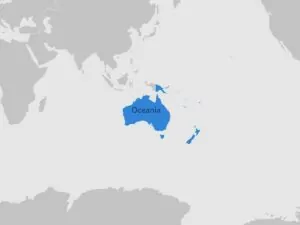
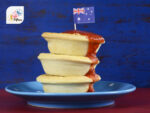
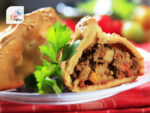
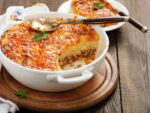
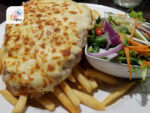




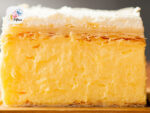


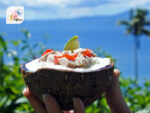
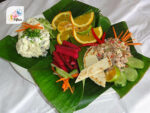
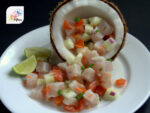
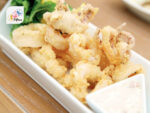
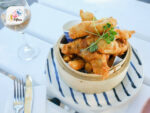

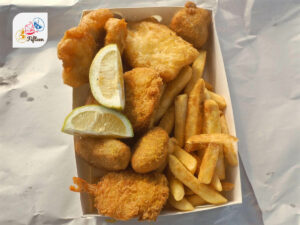

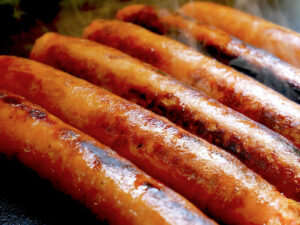
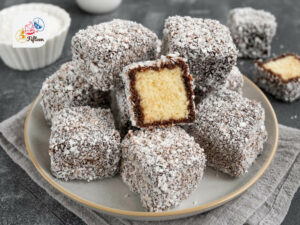
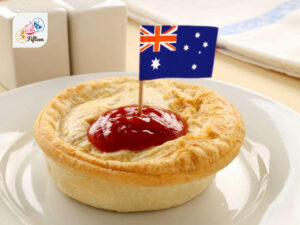
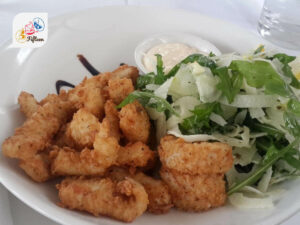
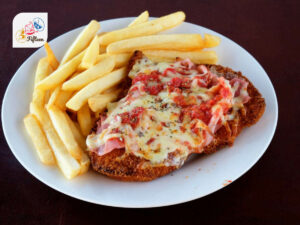
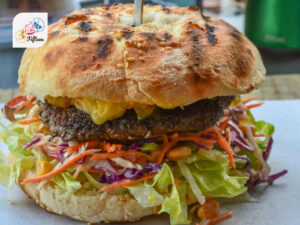
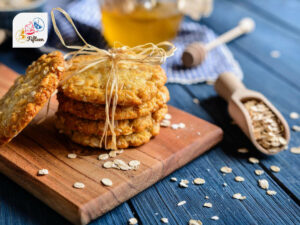
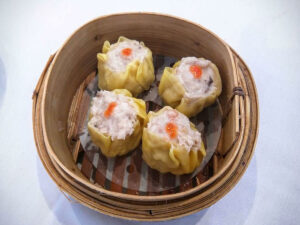
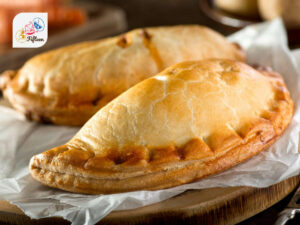
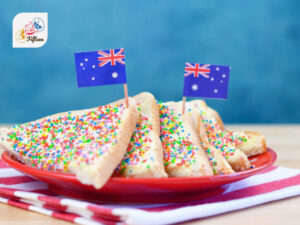
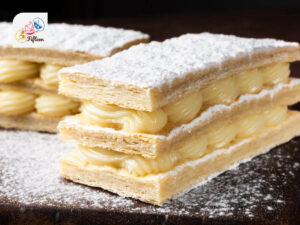

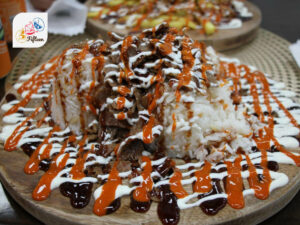
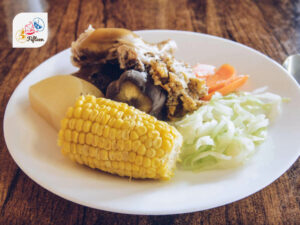


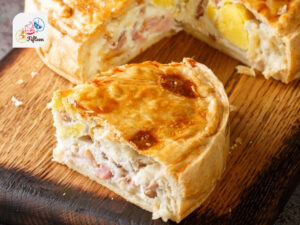
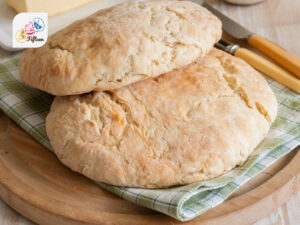
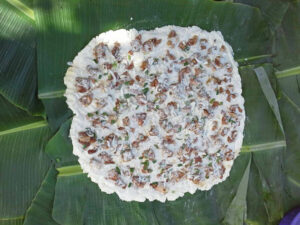
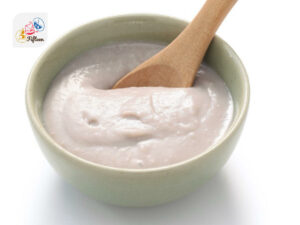

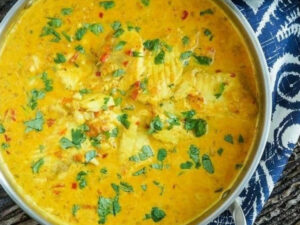
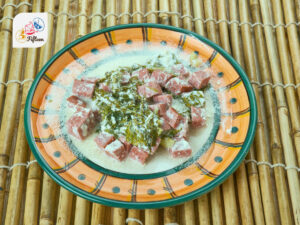
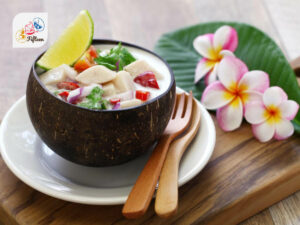
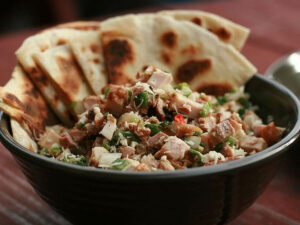
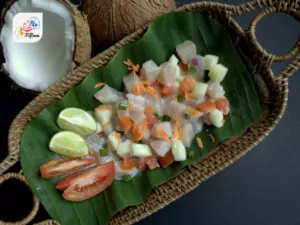
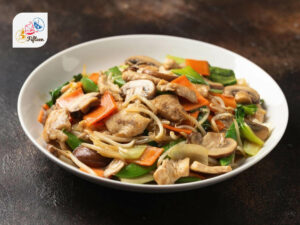
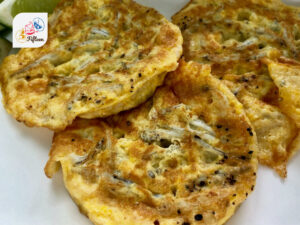
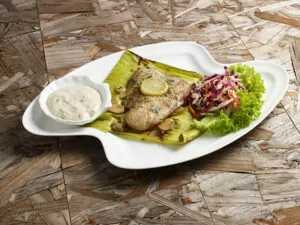
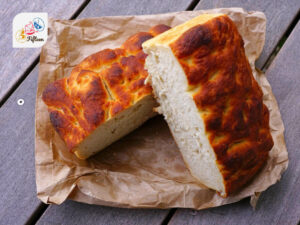
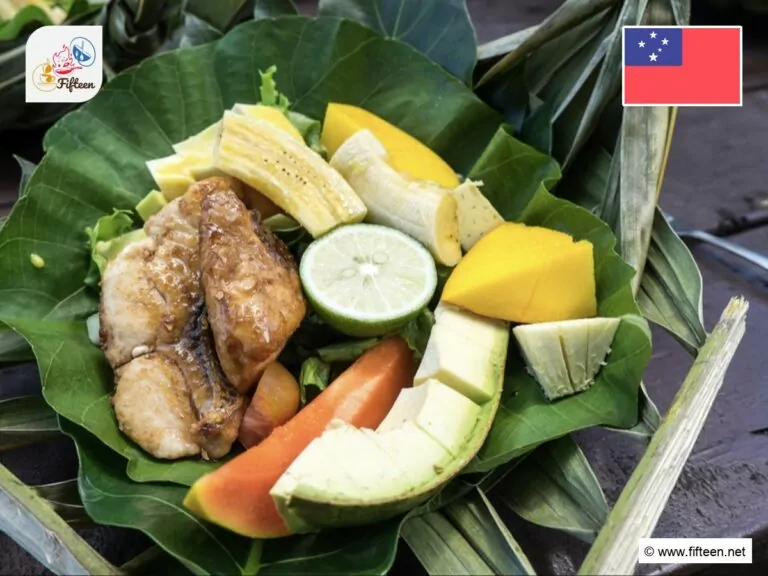
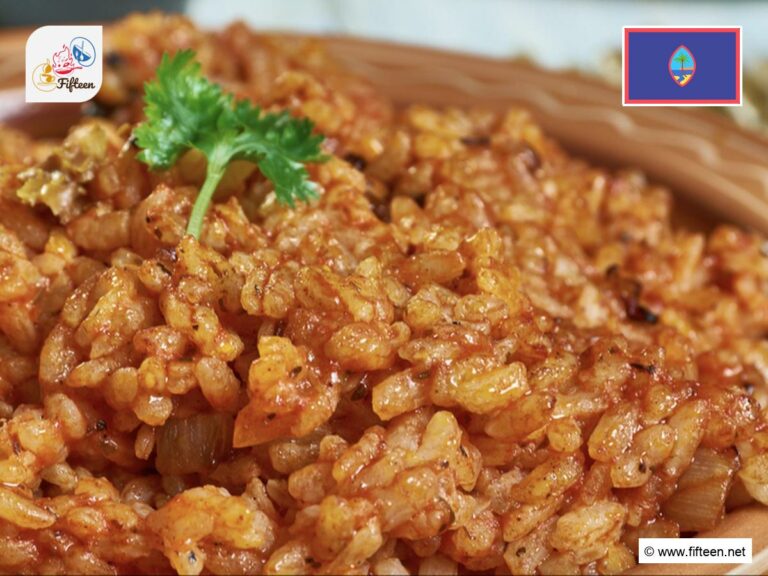
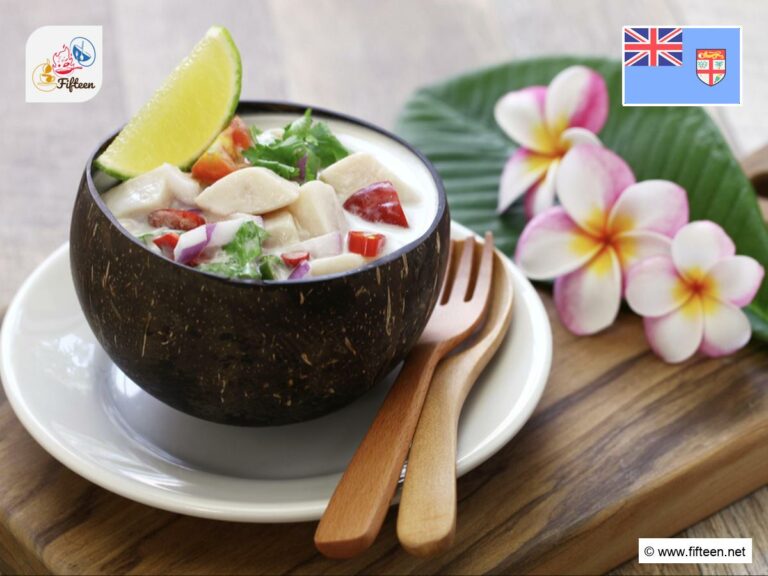
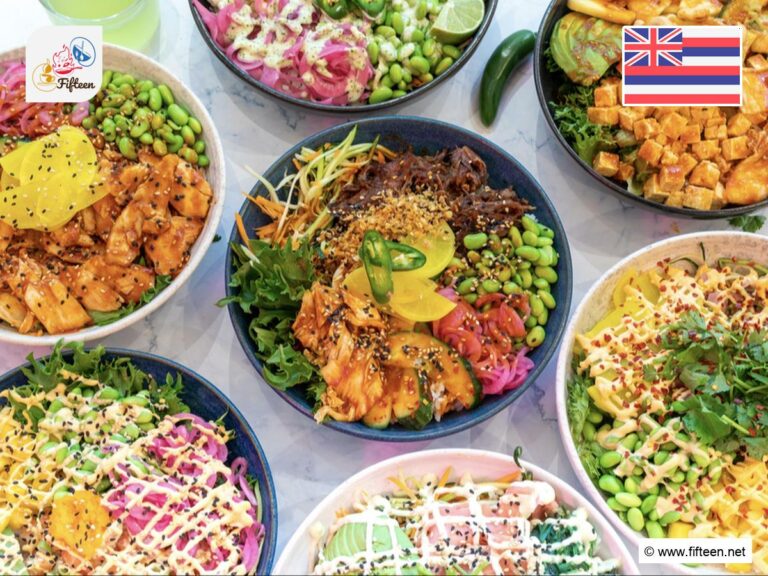
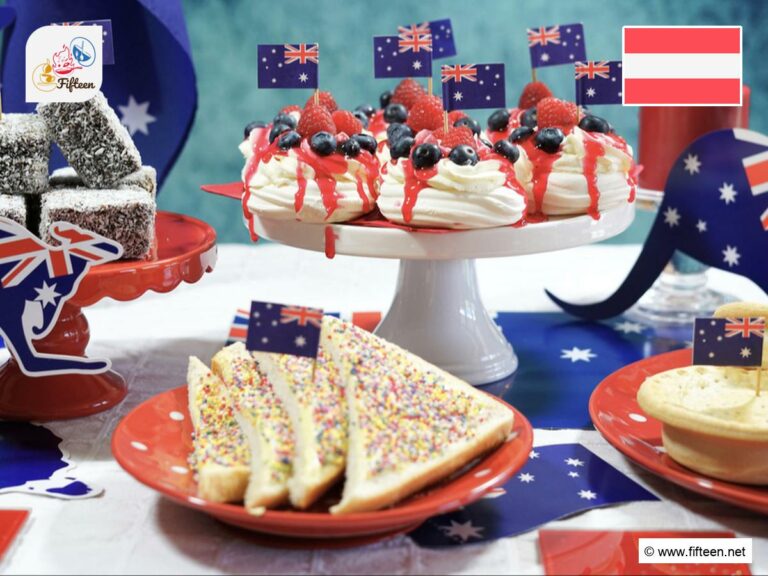
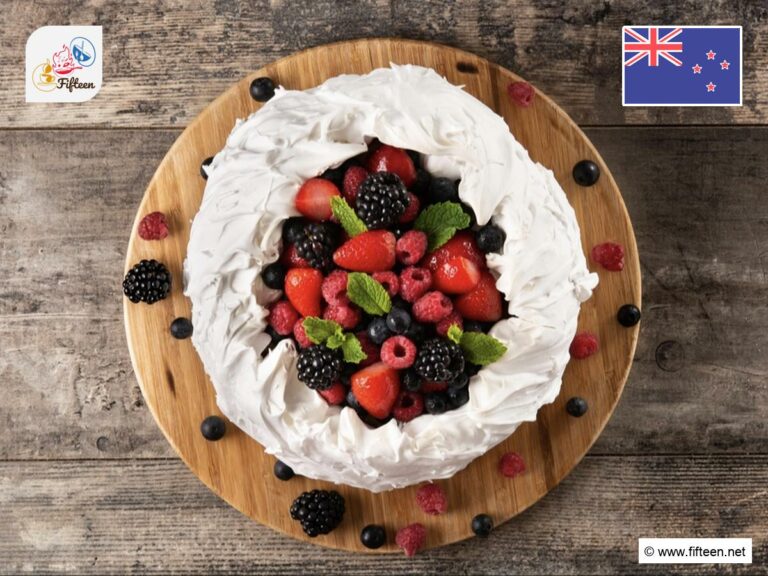
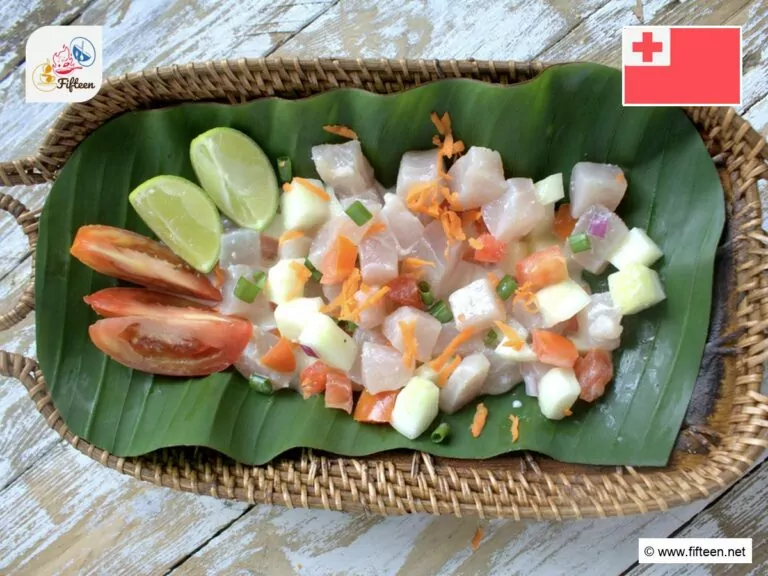
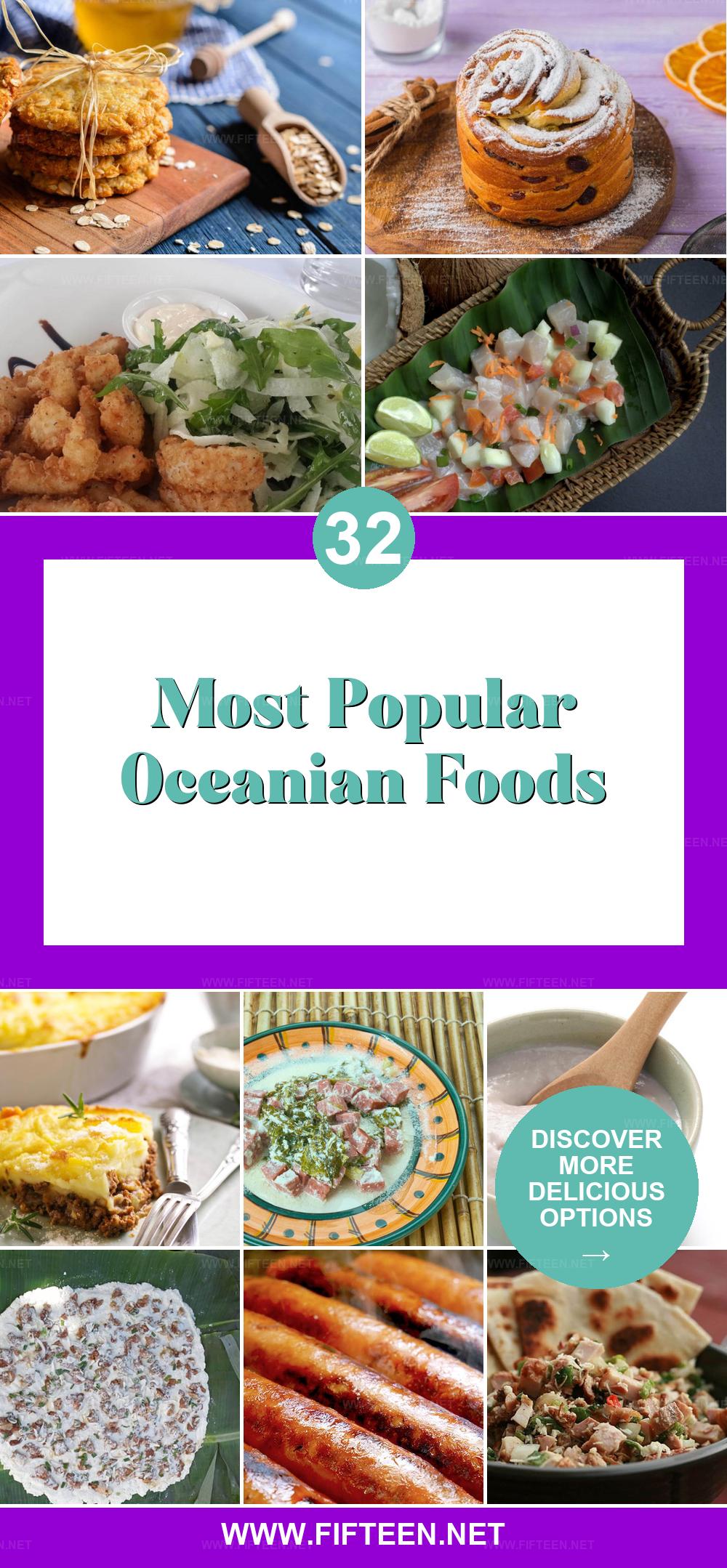
Jamie Scott
Editor in Chief, Senior Content Writer
Expertise
Home Cooking, Meal Planning, Recipe Development, Baking and Pastry, Food Editor, Cooking-video Maker, Western Food Evaluation Expert
Education
Le Cordon Bleu College of Culinary Arts
Local Community College, New York, NY
Jamie Scott is a skilled culinary expert and content creator specializing in Western cuisine. With over 15 years in the culinary field and formal training from Le Cordon Bleu, Paris, Jamie deeply understands how to blend nutrition with delicious flavors. His passion for cooking matches his commitment to making healthy eating accessible and enjoyable.
On Fifteen.net, Jamie brings a fresh perspective to classic dishes and beverages, offering readers insightful recipes, cooking tips, and a fresh view on meal planning that emphasizes taste, health, and simplicity.